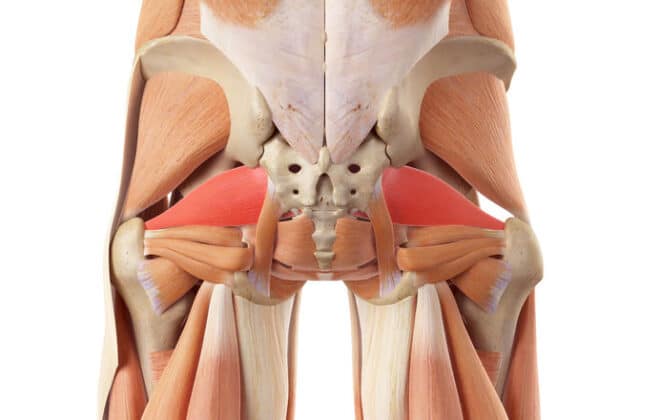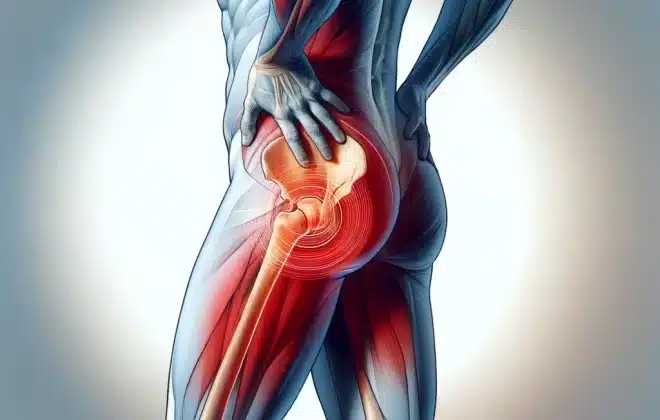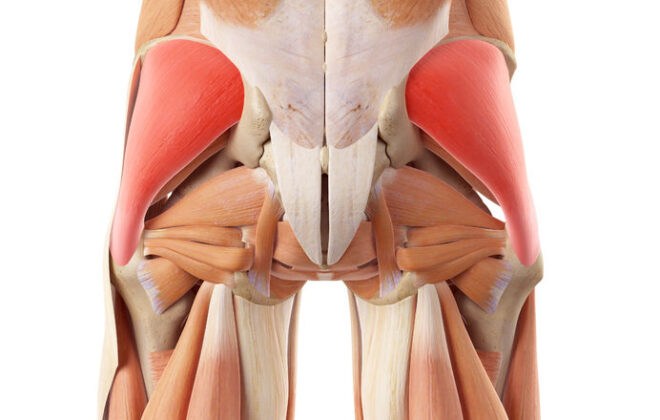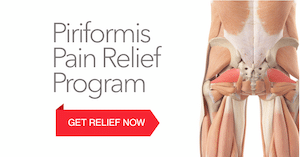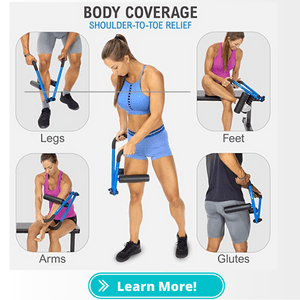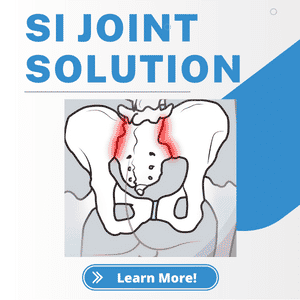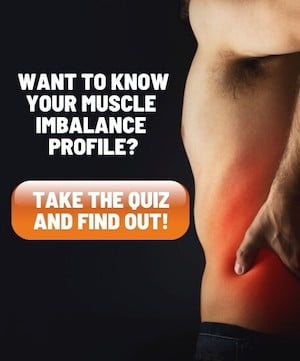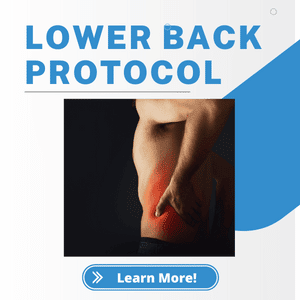The Ultimate Guide to Gluteus Minimus Exercise: Strengthen Your Hip Muscles
The gluteus minimus muscle is a small but important muscle located in the leg and hip region that helps us undertake our daily activities such as walking, running, and climbing stairs. Despite its size, the gluteus minimus plays an important role in stabilizing the hip joint and preventing injury.
Weak gluteus minimus muscles can lead to imbalances in the body, which can cause pain and discomfort in the hips, lower back, and knees.
That’s why you’ll need targeted exercises for the gluteus minimus, which can help strengthen this muscle and improve overall hip stability, balance, and mobility.
In this ultimate guide to gluteus minimus exercise, we will explore the anatomy of the gluteus minimus muscle, its importance in daily activities, and the benefits of targeted exercises for this muscle.
We will also provide step-by-step instructions and modifications for various gluteus minimus exercises, as well as tips for incorporating these best gluteus minimus exercises into your workout routine.
Ready to learn? Let’s get started…
Anatomy of the Gluteus Minimus
The gluteus minimus is a crucial muscle located in the buttocks region. It originates from the external surface of the ilium, which is the largest bone of the pelvis, and inserts onto the greater trochanter of the femur, which is the large bony protrusion at the top of right foot above the thigh bone. The gluteus minimus muscle is part of the hip abductor muscles, which also includes the gluteus maximus, and gluteus medius.
The primary function of the gluteus minimus along with other hip abductor muscles is to stabilize the hip joint and assist in hip abduction, which is the movement of the leg away from the midline of the body.
In addition, the gluteus minimus works in conjunction with other hip abductor muscles to maintain pelvic alignment during movements such as walking, running, and jumping.
Because of its important role in hip stability and movement, the gluteus minimus muscle is often targeted in exercises designed to strengthen the hips and prevent injuries.
Weakness or imbalances in the gluteus minimus muscle can lead to various hip and lower extremity injuries, such as iliotibial band syndrome, hip impingement, and patellofemoral pain syndrome.
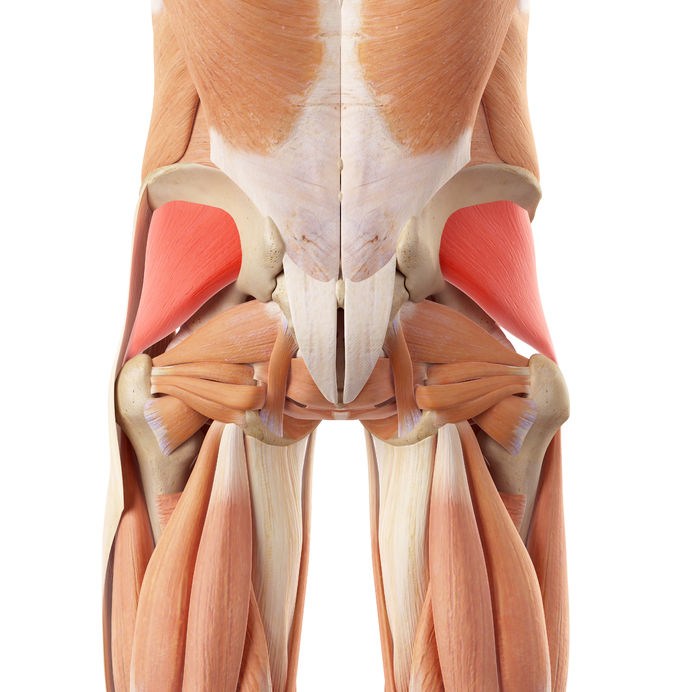
Benefits of Gluteus Minimus Exercises
Engaging in exercises that target this muscle can lead to a variety of benefits, including improved hip stability right knee,, reduced risk of injury, enhanced athletic performance, and better posture and alignment. Let’s have an in-depth look at the benefits:
Improved hip stability.
This muscle is responsible for maintaining the proper alignment standing position of the hip joint, which is essential for all movements involving the lower body. By strengthening the gluteus minimus, individuals can improve their ability to stabilize their hips, reducing the risk of falls and other injuries.
Reduced the risk of injury.
Weak or tight hip and gluteal muscles can contribute to a variety of injuries, including IT band syndrome, patellofemoral pain syndrome, and hip bursitis. By strengthening the often weak gluteus minimus muscles, individuals can improve their overall hip function.
Enhanced athletic performance.
The gluteus minimus is particularly important for activities that involve side-to-side movements, such as running, jumping, and cutting. By strengthening this muscle, individuals can improve their ability to generate power and control during these movements, leading to enhanced athletic performance.
Improve posture and alignment.
This muscle is connected to the pelvis and femur, and plays a key role in maintaining proper alignment of the lower body. Including gluteus minimus targeted workouts can help individuals maintain good posture and alignment, which can improve overall upper body and mechanics and reduce the risk of injury.
Top 5 Exercises for Gluteus Minimus
-
Clamshells
How to perform:
- Lie on your side with your legs bent at a 90-degree angle and your feet together.
- Keep your heels touching and lift your top knee up while keeping your feet together keeping your entire upper body intact.
- Pause at the top of the movement and slowly lower your knee back down to the starting position.
- Return to the starting position for several repetitions before switching sides to the opposite leg.
Common mistakes and how to avoid them:
- Avoid rolling your left hip back during the movement, as this can shift the focus from your gluteus minimus to other muscles.
- Keep your feet in contact with each other throughout the movement and focus on lifting your knee using your gluteus minimus muscles.
-
Side-lying leg lifts
Also known as side lying hip abduction, is a bodyweight gluteus minimus exercise.
How to perform:
- Lie on your side with your legs straight and stacked on top of each other.
- Keeping your bottom leg on the ground, lift your right leg up as high as you can while maintaining proper form.
- Engage your core and glutes to lift your top leg as high as you can while keeping your hips stacked and facing forward.
- Slowly lower your leg back down to the starting position and repeat for several repetitions before switching sides.
Common mistakes and how to avoid them:
- Avoid leaning your body forward or backward during the movement, as this can shift the focus away from your gluteus minimus.
- Keep your hips stacked and maintain proper alignment throughout the side lying hip abduction exercise.
3. Fire hydrants
Another great exercise is the fire hydrant is a simple bodyweight gluteus minimus exercise that targets the gluteus medius.
How to perform:
- Start on all fours with your hands directly under your shoulders and your knees under your hips.
- Keeping your knee bent, lift left leg/foot straight out to the side while keeping your hip and knee at a 90-degree angle.
- Pause at the top of the movement and then lower your leg back down to the starting position.
- Repeat for several repetitions before switching sides.
Common mistakes and how to avoid them:
- Avoid lifting one leg or the top leg too high, which can shift the focus away from your gluteus minimus.
- Keep your movements slow and controlled, and maintain a neutral spine throughout the exercise.
-
Single leg glute bridges
-
How to perform:
- Lie on your back with your knees bent and your feet flat on the ground.
- Lift your right foot up off the ground and extend it straight out in front of you.
- Keeping your other left foot flat on the ground, push your hips up toward the ceiling until your body forms a straight line from your shoulders to your knees.
- Pause at the top of the movement and then slowly lower your hips back down to the starting position.
- Repeat for several repetitions before switching sides.
Common mistakes and how to avoid them:
- Try incorporating hip thrusts into your routine to focus on your gluteus minimus and avoid pushing your hips up too high, which can detract from the intended target area.”
- Keep your movements slow and controlled, and focus on using your gluteus minimus to lift your hips.
5.Lateral band walks
Lateral band walks are a popular exercise that targets the gluteus medius and minimus muscles.
How to perform:
- Place a resistance band around your ankles and stand with your feet hip-width apart.
- Take several steps to the side, keeping your knees bent and your feet pointing forward.
- Take several steps in the other direction to complete one repetition.
- Repeat for several repetitions.
Common mistakes and how to avoid them:
- Avoid letting your knees collapse inward or outward during the movement, which can shift the focus away from your gluteus minimus. Always ensure you keep athletic stance.
- Keep your feet pointing straight ahead and maintain proper alignment throughout the exercise.
Incorporating Glute Minimus Exercises into Your Workout Routine
Incorporating glute exercises into your workout routine is essential for building strong, stable hips, hip extension and improving athletic performance. When it comes to how often to perform these exercises, it is recommended to start with 2-3 times per week, gradually increasing frequency and intensity as your strength improves.
To create a well-rounded workout, you can combine gluteus minimus exercises (hip abduction exercises using hip abduction machine) with other hip and glute exercises. For example, you can alternate between sets of clamshells, single leg exercises, a side plank with hip-lying single leg squat, lifts, fire hydrants, single leg glute bridges, and lateral band walks with exercises like dumbbell bulgarians split squat, standing cable hip abduction, lunges, single leg hip thrust and deadlifts.
It is important to allow for proper rest and recovery between workouts to prevent injury and maximize results. Additionally, incorporating stretching and foam rolling into your routine can help release any tension in the muscles, as well as address glute minimus trigger points, and improve flexibility.
Progression and Variations of Gluteus Minimus Exercises
Once you’ve mastered the basics of gluteus minimus exercises, it’s important to continue challenging your glute muscles to promote growth and prevent plateauing.
Here are some tips on how to progress and add variety to your gluteus minimus exercises:
- Increase resistance: One way to progress is to add resistance to your exercises. You can do this by using resistance bands, dumbbells, ankle weights, or even a barbell. For example, you can hold a resistance band around your thighs while doing clamshells or lateral band walks.
- Increase range of motion: Another way to progress is to increase the range of motion of your exercises. For instance, you can increase the height of your leg lifts or the depth of your squats.
- Incorporate balance challenges: Adding a balance component to your gluteus minimus exercises can help improve stability and increase difficulty. You can try standing on one leg while doing leg lifts, single leg squat or holding a single leg glute bridge for an extended period.
- Try new exercises: There are several variations of gluteus minimus exercises that can challenge your muscles in new ways. Some examples include seated leg lifts, clamshell pulses, curtsy lunges, and lateral lunge walks.
Frequently Asked Questions (FAQ)
-
Can gluteus minimus exercises help with hip pain?
Yes, gluteus minimus exercises may help with chronic hip pain too. The gluteus minimus is one of the main stabilizing muscles of the hip joint, and strengthening it can help improve hip stability and alleviate pain caused by hip instability. In addition, gluteus minimus exercises can also help to address muscular imbalances and weaknesses that may contribute to hip pain.
-
What is the difference between gluteus minimus and gluteus medius exercises?
The gluteus minimus and gluteus medius are two separate muscles, but they work together to stabilize the hip joint. Gluteus minimus exercises typically focus on strengthening the side of the hip, while gluteus medius exercises may target the muscle on the upper part of the glute muscles in the hip. Both muscle groups are important for hip stability and should be included in a well-rounded exercise program.
-
How long does it take to see results from gluteus minimus exercises?
The time it takes to see results from gluteus minimus exercises can vary depending on various factors such as your fitness level, consistency in performing the exercises, and intensity of the workout. Generally, it can take anywhere from 4-8 weeks to see noticeable improvements in hip stability, strength, and endurance. It is important to be patient and consistent with your workout routine to see the best results.
-
Are there any precautions or contraindications for these exercises?
As with any exercise program, it is important to consult with a healthcare provider before starting gluteus minimus exercises, especially if you have any pre-existing medical conditions or injuries. Additionally, if you experience any pain or discomfort during the exercises, it is important to stop and consult with a healthcare provider. It is also important to use proper form and technique during the exercises to avoid injury.
Conclusion
In conclusion, the gluteus minimus is a small but important muscle that plays a crucial role in hip stability and movement.
By incorporating targeted exercises into your fitness routine, you can improve hip stability, reduce the risk of injury, enhance athletic performance, and improve posture and alignment.
Remember to start with the basic exercises and gradually increase the difficulty as you get stronger, and always listen to your body and avoid any exercises that cause pain or discomfort.
By regularly performing gluteus minimus exercises, you can achieve better hip health and function, allowing you to move with ease and confidence in your daily life.
So, what are you waiting for? Start incorporating these exercises into your routine and experience the benefits for yourself!
Sam Visnic
Most Popular Posts
Categories
- Deep Gluteal Pain Syndrome (8)
- Deltoids (2)
- Foam Rolling (2)
- Glutes (9)
- Hamstrings (5)
- Hypnosis for Pain (3)
- Lats (2)
- Levator Scapulae (4)
- Lifestyle (8)
- Massage Therapy (39)
- Mobility (21)
- Movement and Exercise (19)
- Muscles (22)
- Nutrition (2)
- Obliques (1)
- Pain (25)
- Pectorals (3)
- Piriformis (3)
- Plantar Fasciitis (11)
- Psoas (11)
- Quadratus Lumborum (3)
- Quadriceps (2)
- Rhomboids (3)
- Sciatica (1)
- Serratus Anterior (1)
- SI Joint (14)
- Sternocleidomastoid (1)
- Stretching (18)
- Subscapularis (1)
- TMJ (2)
- Trapezius (1)
- Uncategorized (12)

